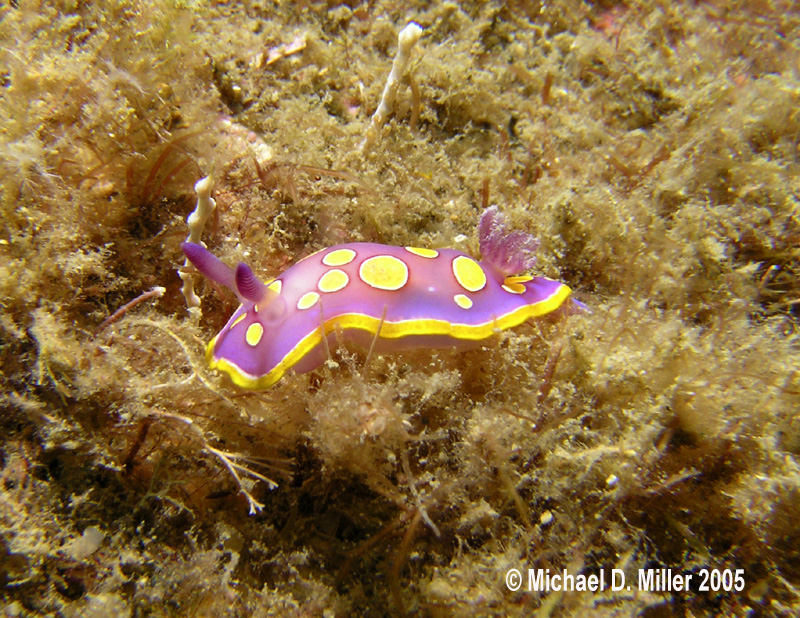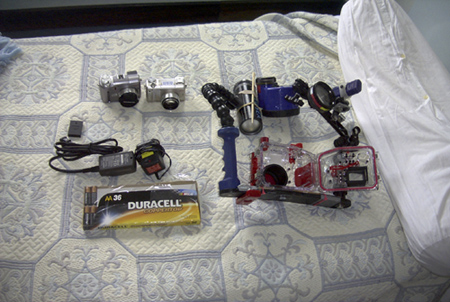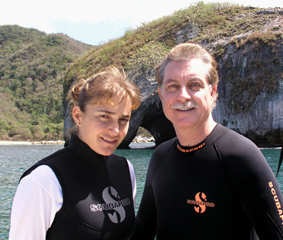 |
Chromodoris luteorosea
Size about 15mmPhoto courtesy of Webmaster
Cerbere, France
Chromodoris luteorosea (von Rapp, 1827)
It was the last dive of the Opisthobranch course given at Cerbere, France (July 18th-23rd) when I descended with specimens provided by Robert Oms to take pictures. As I was setting up for these pics, who should I see but none other than the flamboyant branch seen above. Well, actually how could you miss it? I dropped what I was doing and proceeded to take both still and video of Chromodoris luteorosea . This particular Chromodoris is said to be common to this area of the Mediterranean and was photographed by Marina Poddubetskaia during the 2002 course at Cerbere.
What a great way to finish an outstanding course in marine sea slug biology! During class, I marveled at the beauty of Chromodoris luteorosea in the books and wondered whether the class would be fortunate to find a specimen!
Well, that was one wish come true! Next week I plan to devote the entire BOW to the course at Cerbere! Don't miss this one!
Webmaster
San Diego, Calif
Aug, 2005
U/W Photography Equipment at Cerbere, France

You're probably wondering what this picture is all about. Aside from my Koden stepdown transformer, a power strip, and my laptop which are not in the picture. The equipment seen to the side was all that was necessary to take both quality stills and passable 640 x 480 video (topside and underwater). . The Olympus 755 UZ has been my standby U/W camera for the last two years. This trip was my first opportunity to try out the Olympus 770 UZ. In a nutshell, the performance of the 770 matched that of the 755 shooting stills and far surpassed the 755 in video performance with its MPEG4 640 x 480 30 fps capability. Since I always carried at 5400 degree Kelvin video light with the 755 for spotting purposes, no adaptations were necessary with the 770. I had some concerns about the new lithium ion battery in the 770 but it held up well and recharged completely in under two hours! To save on further weight and space, I brought along a pack of AA batteries in place of the usual assortment of chargers and NiCAD batteries normally used in the Inon 180-S strobe. One set of batteries worked out fine for two dives and might have made it through three! |
When it comes time to record branch behavior (can this be?), video is the way to go (did I actually say that?)
Comments?, let's hear them!
Send the Webmaster email at mdmiller@cts.com
San Diego, California
August, 2005
March 2005

Ali Hermosillo and Dave Behrens
Author:
Pacific Coast Nudibranchs
Send Dave mail at dave@seachallengers.com
|
